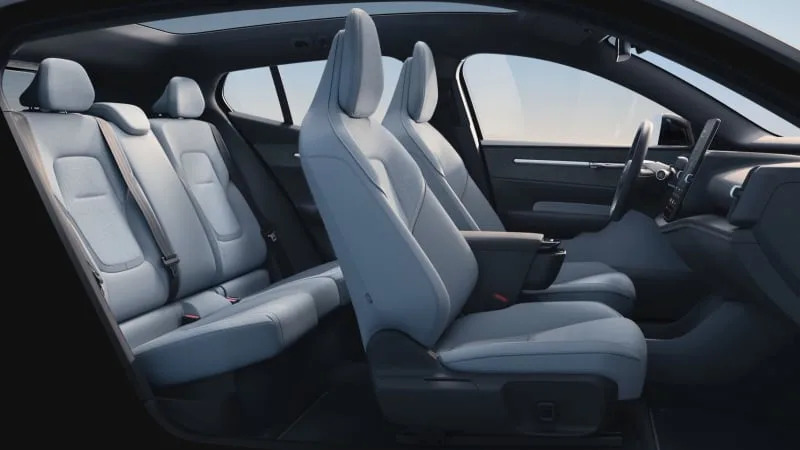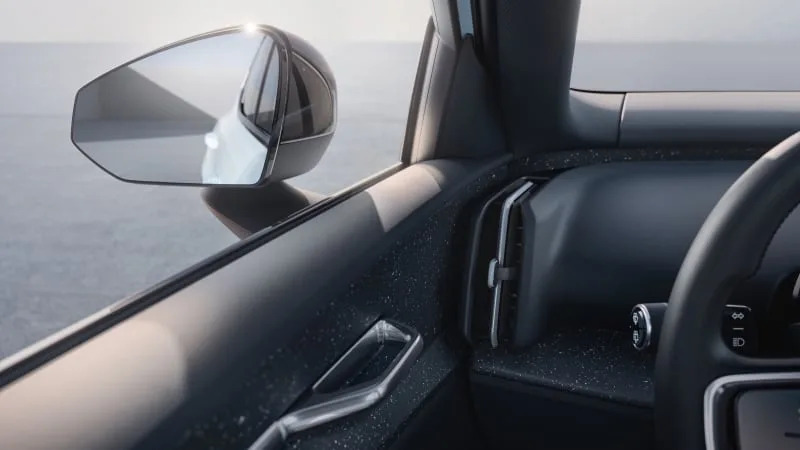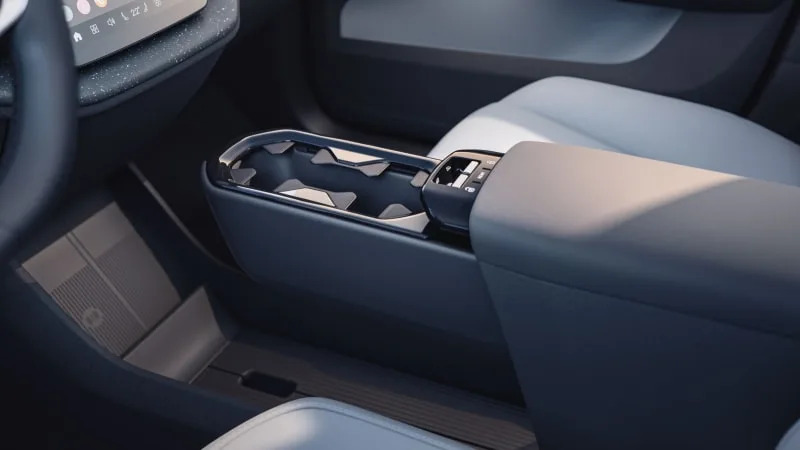Volvo EX30 Deep Dive: Designing a budget SUV

We just spent a couple days with, in and around Volvo’s latest all-new electric vehicle, the EX30, at the company’s headquarters in Gothenburg, Sweden, and we came away impressed. We went in with questions, and came out with answers, or so we think, though some of them will remain until we drive it in November.
A number of automakers are promising truly affordable EVs, ones that not only undercut the current, $4,600 price differential between new battery-powered cars and their internal combustion powered siblings, but ones that are significantly lower than the general average new car transaction price, which is currently nearly $50,000. Mass market EVs like this are important, if we are to make a real environmental impact with our switch to battery power, as there is little that is green about the resource-hoarding production and utilization of niche, six-figure, five-ton electric pickups and SUVs.
Volvo aims to be first to market with such a car, with the compact EX30, which it plans to sell starting at $35,000. This is a new category offering for the brand, one that slots in well below the current XC40 Recharge EV in terms of price and size. For contrast, that car starts at around $50,000, and is 8 inches longer, 4 inches higher and nearly 3 inches wider.
This seems like a strange move for a company whose mission, since being purchased by the Chinese manufacturing company Geely, has been to move upscale into the same consideration set as the luxury German brands. But, as is often the case, Volvo is taking its own path. “This is indeed a lower segment for us,” says Joakim Hermansson, the vehicle product lead for EX30, as he walks us around the car, inside and out, and allows us to sample the sharp accelerative abilities of the range-topping, 442 hp, dual-motor, all-wheel-drive model (0-60 in 3.4 seconds.) “But it’s still premium for Volvo, providing hallmark features of safety, sustainability and personalization, as well as performance.”
He’s not wrong about any of these. This EX30 comes standard with Volvo’s extra-strength safety cage as well as lane-keeping, adaptive cruise control and blind spot monitoring. Perhaps most notably, it has an all-new interior design that capitalizes on the efforts the brand has been making toward its internal goal of being fully circular in its sustainability efforts by 2040. This means all manner of fresh, individualizable materials that are made from recycled, upcycled and de-waste-streamed products, including old security barriers, ocean garbage, soda bottles and even scraps of blue jeans. These are transformed by Volvo’s suppliers into hip, technical fabrics, trim pieces and structural supports, taking the place of the veneers, hides, metals and off-gassing new plastics that generally populate upscale vehicles.
Environmental friendliness is part of the story here, but a deeper read is on the creation of new notions of what constitutes premium. “This fits into our wheelhouse as a brand. It’s our design aesthetic,” says Dan Fidgett, Volvo’s head of color and material, of the new look of the EX30’s interior, which not only lacks traditional material cues, but lacks familiar totems like an instrument panel, buttons or knobs, speaker grilles or HVAC switchgear. “Scandinavian minimalism and a lack of clutter. And as the internal combustion engine goes away — and the smells and noise go with it — we are asking what replaces it? This kind of innovation, these materials, can be one way to provide the emotional journey for this next generation of vehicles.”



The effect is a bit jarring at first, kind of like sitting in a pre-production styling buck. It just feels … empty. But upon second and third looks, the new materials become more of a focus, and gain and offer interest in their texture, their layering and especially their color: watery blues, verdant greens, fog greys and speckled conglomerates. “Culturally, following the lockdowns of the pandemic, we’re in a stepping-out moment. People are ready for a bit more color,” Fidgett says. “But the more we take out, the more work the materials have to do. It’s like a quality restaurant. If you use good ingredients, you don’t have to be complicated.”
This approach allows a focus on intriguing application, and the way materials can be figuratively and literally stitched together, allowing for cool new solutions. In the EX30, these include novelties like a knit phone pocket in the back of each front seat; a shallow, floor-mounted cabinet with a holster to keep your phone upright in case you have to stop and get on a video call; a center arm rest with multiple opening detents for storage or cup holding; a rear seat bin that can be used as a trash can; and all manner of little (and big) cubbies in the doors, below the rear load floor and in the frunk.
Of course, a core motivator for this journey is on de-contenting as a means to keep the price point low. One screen that controls everything is far cheaper to produce than dedicated knobs and dials and buttons. Similarly, the exterior of the car is made with fewer castings and less complex stampings. And efforts were made to save weight everywhere — in sheet metal, in trim pieces, in the use of plastic in the wheel trim, even in the wiring — not only in order to extend the range of the battery, but also to reduce material and production cost. Moreover, the car is being built in China, where labor costs are lower than even the non-union factory Volvo constructed in South Carolina.

Volvo is hoping, guessing really, that various new categories of consumers will be attracted to this type of offering. “It’s natural to think about Gen Z. Their mindset is changing. They take sustainability seriously,” Fidgett says. “But it’s not just younger consumers. Downsizers, empty nesters, might also find an offering like this really compelling, people who want to do more with less. We certainly saw that with XC40.”
The car is certainly interesting and well-executed, and is poised, as a Volvo, to pull in a swath of consumers seeking a motivator to make the move to EV. The nearly century-old Swedish brand is counting on its core values — safety, wellness, self-care, durability and sustainability — to catalyze that shift. “Those are all part of the Volvo DNA,” Fidgett says. “It’s the right time in history for Volvo.”
Related video:







